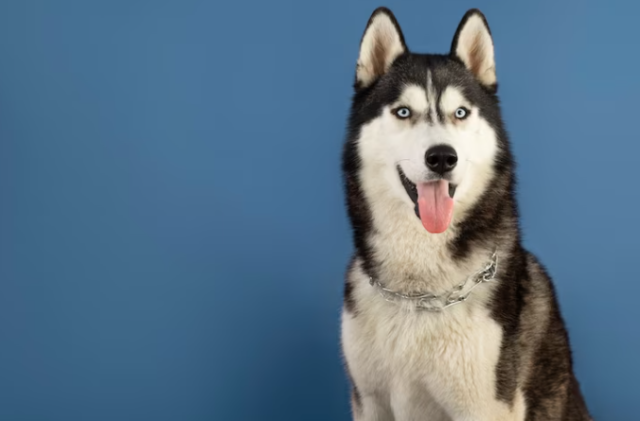Introduction
Have you ever come across a blue dog and found yourself captivated by its unique charm? Blue dog breed possesses an undeniable charisma that sets them apart from their counterparts. In this article, we will delve into the intriguing world of blue dog breeds, exploring their distinct characteristics, origins, care requirements, and why they have become increasingly popular among dog enthusiasts. Join us on this enchanting journey as we unravel the allure of these captivating canines.

The Uniqueness of Blue Dog Breeds
Blue dog breeds exude an aura of mystery and elegance, instantly capturing attention wherever they go. What makes them truly extraordinary is their coat color, which appears in various shades of blue. From striking steel blues to subtle hues resembling the sky or ocean, these dogs possess a distinct allure that has fascinated dog lovers worldwide.
Origins and Breeds of Blue Dogs
The origins of blue dog breeds can be traced back to specific genetic traits that influence coat color. Some well-known blue dog breeds include the Weimaraner, Blue Lacy, Kerry Blue Terrier, and the stunning Blue French Bulldog. Each of these breeds showcases the unique beauty and individuality associated with blue-coated canines.
Characteristics and Temperament
Blue dog breeds exhibit a range of temperaments, but there are a few common traits among them. Known for their intelligence, loyalty, and elegance, these dogs make wonderful companions for individuals and families alike. Their distinctive appearance and affectionate nature make them an excellent choice for those seeking a truly remarkable canine companion.

Care and Grooming
Caring for a blue dog breed involves regular maintenance to keep their coat healthy and vibrant. While specific grooming requirements may vary depending on the breed, routine brushing, regular baths, and proper nutrition are essential for maintaining their lustrous blue coats. Additionally, providing ample exercise and mental stimulation is crucial to keep these intelligent breeds happy and content.
Training and Socialization
Like any other dog breed, blue dogs require consistent training and socialization to thrive. Their intelligence and eagerness to please make them highly trainable, but it’s important to establish firm yet positive leadership. Early socialization with other dogs and various environments will help develop their confidence and ensure they grow up to be well-rounded companions.
Health Considerations
While blue dog breeds are generally healthy, certain breed-specific health concerns may arise. It’s crucial to choose a reputable breeder who prioritizes health testing and responsible breeding practices. Regular veterinary check-ups, vaccinations, and preventive care are essential to ensure the overall well-being of your blue-coated companion.
Blue Dog Breeds in Popular Culture
The enchanting allure of blue dog breeds has not gone unnoticed in popular culture. From movies to advertisements, these stunning canines have captured the imagination of artists and creatives. Their unique appearance and distinct presence make them a popular choice for various forms of media, further solidifying their status as remarkable and sought-after pets.

The Rising Popularity of Blue Dog Breeds
In recent years, the popularity of blue dog breeds has soared, with more people being drawn to their distinctive beauty and captivating personalities. Their increasing presence in households and on social media platforms showcases the profound impact these canines have on dog lovers around the globe. As more individuals discover the allure of blue dog breeds, their demand for pets continues to rise.
Finding Your Perfect Blue Companion
If you’re considering adding a blue dog to your family, it’s essential to research and find the breed that aligns with your lifestyle and preferences. Each blue dog breed possesses its own set of characteristics, energy levels, and care requirements. Take the time to learn about their temperaments, exercise needs, and compatibility with children or other pets. This will ensure a harmonious and fulfilling relationship between you and your new four-legged friend.
Conclusion
The enchantment surrounding blue dog breeds is undeniable. Their alluring coat colors, coupled with their distinct personalities and loyal nature, make them extraordinary companions. From their intriguing origins to their rising popularity, blue dog breeds continue to captivate dog enthusiasts worldwide. If you’re seeking a unique and charismatic canine companion, exploring the world of blue dog breeds may lead you to your perfect match.
FAQs
Q1: Are blue dog breeds more prone to health issues compared to other dogs?
Blue dog breeds are generally healthy, but like any other breed, they may have specific health concerns. It's crucial to research breed-specific health issues and choose a reputable breeder who prioritizes health testing.
Q2: Can I dye a dog's coat to make it blue?
No, dyeing a dog's coat is not recommended and can be harmful to their health. Natural coat color is determined by genetics, and attempting to alter it with dyes or chemicals can lead to skin irritation and other complications.
Q3: Are blue dog breeds suitable for families with children?
Many blue dog breeds are excellent companions for families with children. However, it's essential to consider the specific breed's temperament, energy levels, and compatibility with children. Always supervise interactions between dogs and young children to ensure safety and teach children proper handling and respect for the dog.
Q4: How often should I groom a blue dog breed?
Grooming needs can vary among blue dog breeds. However, regular brushing to prevent matting and maintain a healthy coat is typically recommended. Consult breed-specific grooming guidelines and establish a grooming routine that suits your dog's needs.
Q5: Can blue dog breeds participate in dog sports and activities?
Absolutely! Blue dog breeds are often highly intelligent and athletic, making them excellent candidates for various dog sports and activities. Engaging them in agility, obedience training, or even canine sports like dock diving can help channel their energy and provide mental stimulation.
Read also
- Unveiling the Charms of Chug Dog Breed: A Perfect Blend of Cuteness and Companionship
- Find Your Perfect Match: Discovering the Ideal Target Dog Breed
- Dog First Aid: Essential Tips to Keep Your Furry Friend Safe and Healthy
- Stop Dog Chewing Paws Now! Effective Home Remedy for Happy Pups
- Unraveling Shiba Inu Mixes: Discover Canine Crossbreeds
- Dog Food Storage Container: Keeping Your Pet’s Meals Fresh and Organized
- Dog Breeding : An Ultimate Guide To Choose The Best
- Find the Best Dog Food for Your Huskies
- Stop Dog Nail Bleeding Fast: 5 Easy Home Remedies
- Discover the Best Dog Food for German Shepherd Puppy: Unveiling the Ultimate Guide!
- Top 10 Best Large Dog Car Seats for Safe Travel in 2023
- Unveiling the Enchanting Lady and the Tramp Dog Breed: A Tale of Elegance and Playfulness
- Discover the Most Loyal Dog Breed: Unwavering Canine Companions
- Discover the Enchanting Feist Dog Breed: A Blend of Tenacity and Intelligence
- Discover the Benefits of High Protein Dog Food for Optimal Canine Health
- Unveiling the Enchanting Benji Dog Breed: A Delightful Mix of Charm and Intelligence
- Dog Dental Chart: A Comprehensive Guide to Your Dog’s Dental Health
- Vet Approved Homemade Dog Food Recipes for Kidney Disease
- Tough Dog Toys: Durable Toys for Your Pup | Buy Today
- Do Dog Dental Chews Work? We Investigate and Reveal the Truth



